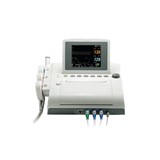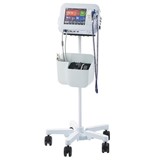It is the leading cause of death in Australia. CVD can be preventable; hearing life-saving stories may inspire and encourage action for improved access and cardiology education.
World's first circulatory death heart transplant
In a world first, surgeons have successfully resuscitated two hearts donated after circulatory death (DCD) and used the hearts in a heart transplant.
Combined research from the Victor Chang Cardiac Research Institute and Sydney's St Vincent's hospital created a preservative solution allowing the donor heart to be connected to a sterile circuit, which restores the heart beat while keeping it warm. The process limits the adverse effects associated with cold ischaemia, where hearts are kept on ice. The preservative solution allows hearts to be reanimated, preserved and assessed until they are ready to be transplanted.
This breakthrough has implications for patient reliance on cardiac organ donation. Hearts previously considered unsuitable for transplantation could become available to end-stage heart failure patients. Researchers are still determining how long after DCD a heart can be resuscitated, but so far have revived hearts more than 30 minutes after death.
Wireless technology eliminates pacing leads
The world's first wireless pacing system uses a leadless electrode that wirelessly transmits mechanical energy from an ultrasonic pulse generator. The energy is converted into electrical energy used to pace the heart as part of Cardiac Resynchronisation Therapy (CRT).
Past cardiac stimulation relies upon leads that are considered a weak aspect of pacemaker systems. Wireless technology has been adapted effectively for cardiac healthcare to eliminate all pacing leads, and offers flexibility placement of electrodes. The technology may also provide a life-saving option for patients who do not benefit from CRT therapy.
Patients receive world's smallest cardiac monitor
Patients with an irregular heartbeat have been implanted with the world's smallest Insertable Cardiac Monitor (ICM) to detect tiny changes in heart rhythm. The cardiac monitor can assist patients who may otherwise go undiagnosed and could prevent potentially fatal outcomes.
Performed by an interventional cardiac electrophysiologist, the implant can detect associated heart disease earlier, and can offer patients who have detectable arrhythmia early diagnosis and treatment. It can also provide reassurance to patients who have medically insignificant heart palpitations.






















